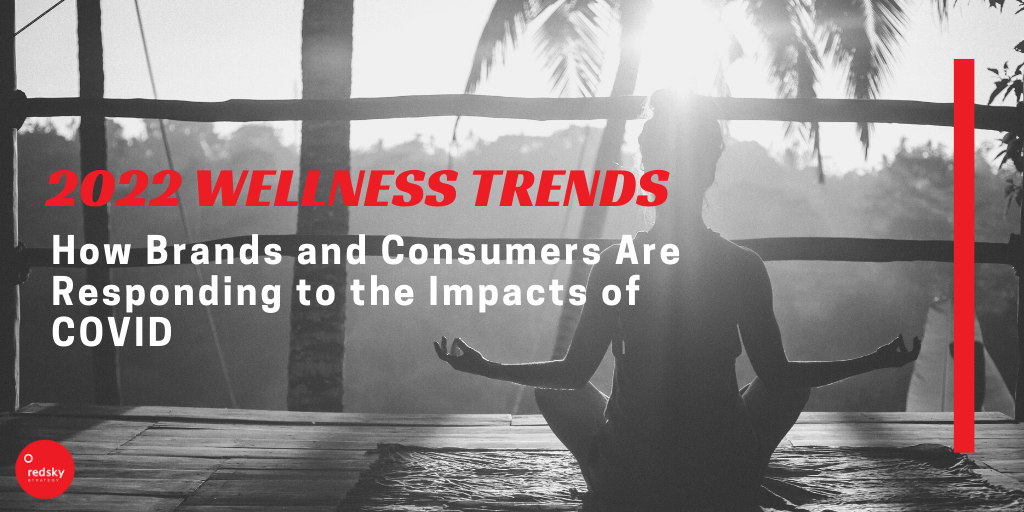News
2022 Wellness Trends: How Brands and Consumers Are Responding to the Impacts of COVID
 COVID-19 has affected nearly every facet of life across the globe. Among the many shifts we’ve seen are in regards to health and wellness consumer behavior.
COVID-19 has affected nearly every facet of life across the globe. Among the many shifts we’ve seen are in regards to health and wellness consumer behavior.
Mental, emotional, and physical health concerns have spiked, causing many to reconsider their purchasing decisions. In fact, research shows that 54% of consumers will change their shopping and spending behaviors in response to the pandemic.
Brands must re-evaluate their priorities and responses to shifting consumer interests and needs. More than ever, it’s becoming necessary to put the wellness of consumers ahead of profits to promote sustainability and authenticity.
Let’s take a closer look at five wellness trends we can expect throughout 2022 as the world continues to adjust to the impact of COVID-19.
1. Providing an Inclusive Experience
With more consumers prioritizing their health and being selective about their spending, we’re seeing brands recognize individuality and distinct shopper segments through an accessibility lens. The result is more personalized and unique products.
An example of a major retailer offering inclusivity in terms of disability is Nike’s Go FlyEase adaptive shoewear:

The line lets consumers “enjoy sport no matter [their] ability with technology developed from insights from the disability community.” Another example is Prada, which joined The Valuable 500, a global consortium focused on “radically transforming the business system” and “innovating together for disability inclusion.”
Brands are taking advantage of the opportunity to demonstrate their values while increasing customer loyalty. The more inclusive the experience, the easier it is to break down barriers to reach and serve new customers.
2. Connecting to Consumers Through Community
In these controversial and trying times, it’s critical for brands to demonstrate purpose as consumers expect more from the companies they support. We can see this unfolding in various ways, including through charitable initiatives and social responsibility.
COVID lockdowns have limited social gatherings and created levels of isolation that impact the mental wellness of many. However, brands are helping counteract the disconnect by facilitating a sense of connection, ‘togetherness’, and support through community-building initiatives.
Consider La Samaritaine, a luxury French department store that included 96 social housing units and a nursery in its post-pandemic relaunch plans. This initiative aligns with the 15-Minute City neighborhood project, which is “putting people at the center of urban transformation.”
Virtual interactions have also made it easier to maintain human connections with consumers. Brands are discovering new ways of entering our homes, whether it’s to help with exercising, working remotely, or socializing with friends.
3. Prioritizing Mental and Emotional Wellness
Mental health and lack of connectivity have been a primary concern for many Americans. Research shows that three-quarters of U.S. respondents are experiencing COVID-related distress and more than 50% feel anxious and/or depressed.
As a result, there’s an uptick in people turning to calming and stress-relieving products and activities that provide mindfulness. This includes everything from indoor trees to alternative and innovative technology solutions like meditation headbands and mood-enhancing lightboxes.
There’s also been an increase in businesses and agencies promoting mental health initiatives by launching awareness campaigns and providing resources. Normalizing the conversations surrounding mental health has made it easier for consumers and brands to turn their focus on products that can help improve overall mental health outcomes.
4. Advocating for Aftercare Economy
Between heightening unemployment rates, decreasing incomes, and supply chain disruptions, more consumers are taking a careful approach to their purchasing decisions. As we emerge from isolation, many are shying away from excessive spending and prioritizing consumption quality over quantity.
In a push to scale sustainability, another wellness trend surfacing is the advocacy of the after-care economy (cleaning, alterations, etc.). More brands are adopting eco-thinking mindsets that cultivate conscious consumption, including extending the life of products.
For example, Zalando launched a Care & Repair initiative with Save Your Wardrobe, a digital closet app, to provide aftercare services on the e-commerce platform, which are sourced to local suppliers and family-owned businesses:
In the same vein is Apple’s Self-Service Repair. The service grants motivated customers access to Apple parts and tools so they can perform their own DIY repairs. This move seems to be an attempt to mend relationships with customers displeased about the longevity and traditional repair costs for Apple products.

5. Striving for Self-Empowerment and Superior Self-Care
As health concerns rise, so do consumer interest and willingness to participate in self-care activities. A national survey discovered that 80% of adults plan to be more mindful about practicing self-care consistently post-pandemic. Additional research showed consumers’ prioritization of wellness has increased 65% over the past three years.
COVID-19 accelerated the self-care trend, and most people now consider health in their daily lives. With lockdowns preventing and changing the way many people seek out things like beauty treatments (salons, spas, etc.) and an increasing desire to save money, it makes sense more people are turning to self-service forms of self-care.
Brands are making it easy to perform health and beauty rituals at home by providing tutorials and online consultations. Even weight management apps such as Noom empower individuals to take a proactive approach to their health and wellness in a personalized manner:

As we enter the third calendar year of the pandemic, we expect to see trends surrounding health and wellness concerns continue to take center stage. Consumers are redefining what it means to lead a healthy lifestyle, taking financial, emotional, physical, and social factors into account. Brands have opportunities to meet the demands and informed behaviors of consumers to respond to their growing need for authenticity, care, and connection.
Interested in working with RedSky Strategy to shift your perspective and marketing strategies? Our team looks forward to meeting with you and uncovering how we can use HumanSight™ to illuminate the best pathway to growth for your company.
